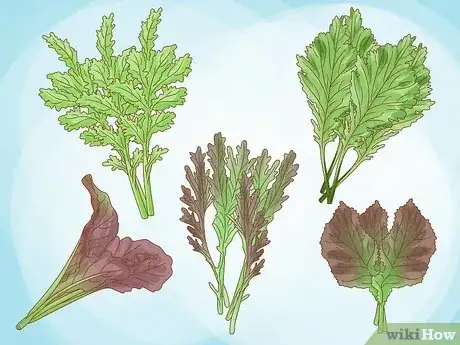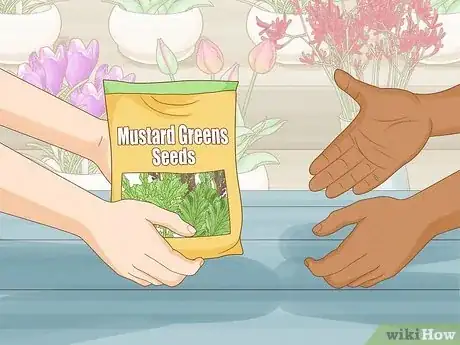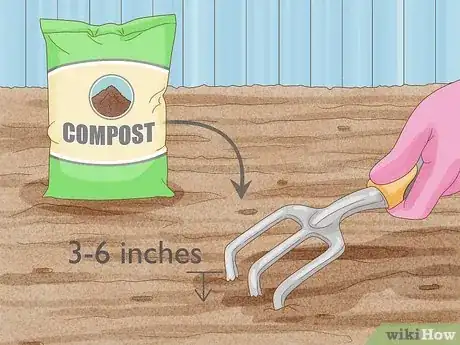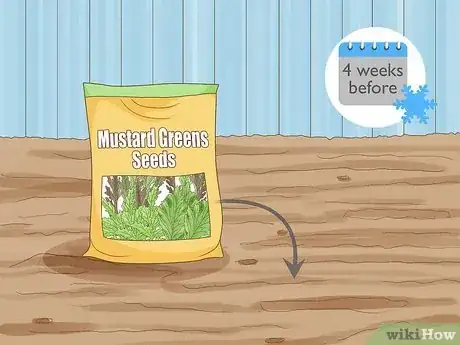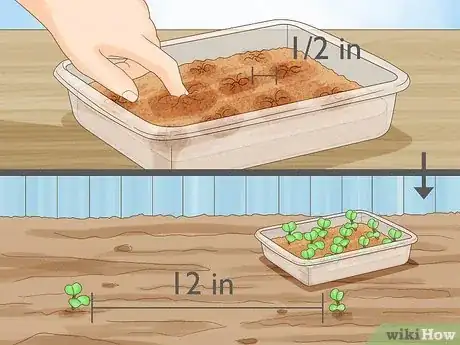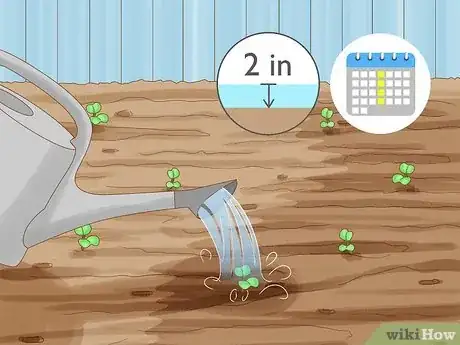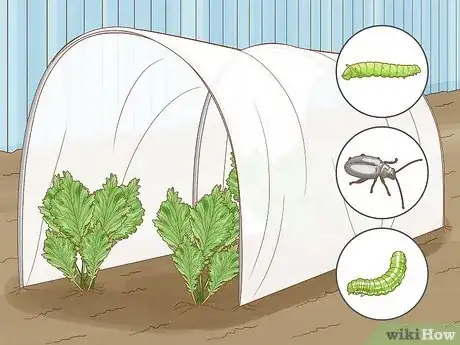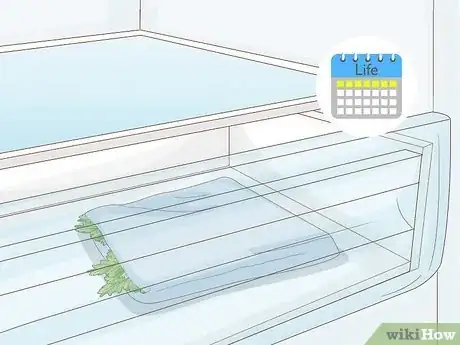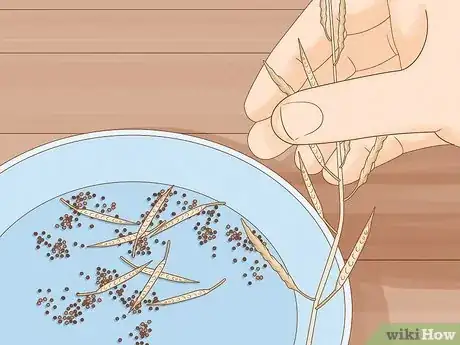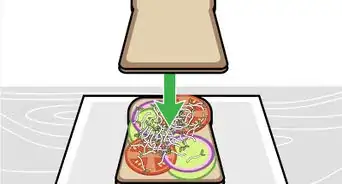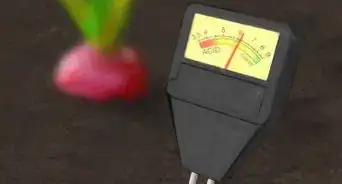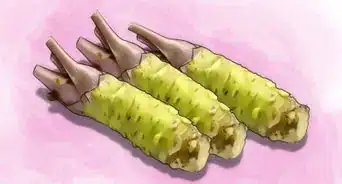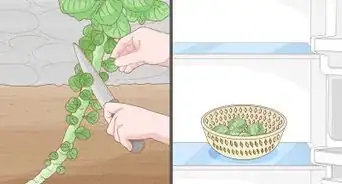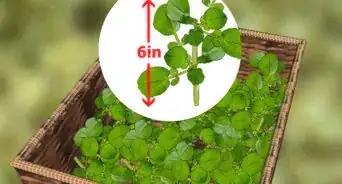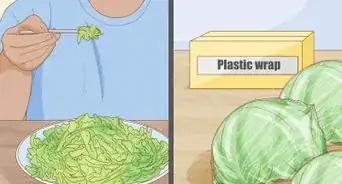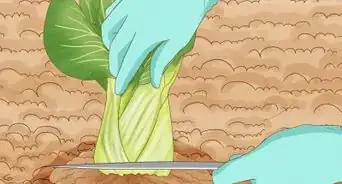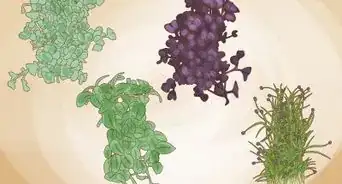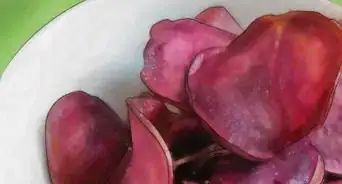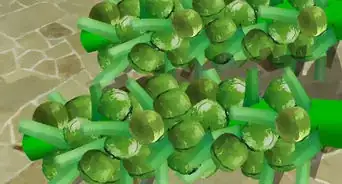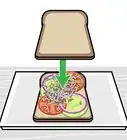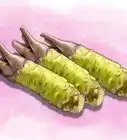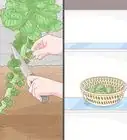This article was co-authored by Lauren Kurtz. Lauren Kurtz is a Naturalist and Horticultural Specialist. Lauren has worked for Aurora, Colorado managing the Water-Wise Garden at Aurora Municipal Center for the Water Conservation Department. She earned a BA in Environmental and Sustainability Studies from Western Michigan University in 2014.
There are 8 references cited in this article, which can be found at the bottom of the page.
wikiHow marks an article as reader-approved once it receives enough positive feedback. In this case, several readers have written to tell us that this article was helpful to them, earning it our reader-approved status.
This article has been viewed 120,027 times.
Mustard greens are spinach-like plants whose leaves have a unique, peppery flavor. To grow mustard greens, purchase seeds and plant them in enriched soil, then uproot and replant the seedlings that emerge. Make sure to water, weed, and protect your plants from plant-munching bugs. Once they're ready, you can harvest the leaves and, if you wish, let the plants seed to harvest mustard seeds as well.
Steps
Planting Mustard Greens
-
1Choose from a variety of mustard greens. Mustard greens come in different varieties ranging in color, texture, and shape of leaves. These varying types of mustard greens come from different regions of the world, including Asia, Africa, and the Southeastern US. To create an interesting mix, plant two or more of these varieties:[1]
- Ruby Streaks
- Red Giant
- Scarlet frills
- Southern Giant Curled
- Golden Frills
- Amara
- Garnet Giant
- Red Splendor
- Suehlihung No. 2
-
2Purchase your seeds. Purchase seeds for growing mustard greens from a local gardening center, online, at hardware stores, or at department stores. Given the quick growth cycle of mustard greens, you can replant them every two or three weeks to keep up production. If you intend to do so, purchase more accordingly.Advertisement
-
3Prepare the soil. Mustard greens grow best in moist, rich soil. To prepare the soil for planting, spread compost over the planting area, about 3 to 6 inches thick. Carefully turn the compost into the ground with a digging fork, loosening the soil.[2]
-
4Time your planting. Mustard greens thrive in cooler temperatures but do not grow well in summer. Aim to start seeds about four weeks before the last frost. The plants can tolerate frost, which actually contributes to a sweeter flavor to the greens.[3]
-
5Plant the seeds. Plant seeds just under the soil, about a half an inch apart. Once the seedlings sprout and grow their first leaves, gently unearth them and pull them apart into clumps. Replant the seedlings approximately 12 inches apart. While this replanting of the seedlings is not necessary, doing so will allow greens to grow faster and yield more.[4]
Caring for Your Mustard Greens
-
1Water the greens. Mustard greens require 2 inches of water per week to thrive. Factoring in rainfall, make sure that they receive adequate hydration. Be sure to keep the soil evenly and consistently watered. [5]
-
2Remove weeds. Carefully remove any weeds you see growing around your plants. While mustard greens do not require a lot of room to grow, the influx of weeds can cause unnecessary disturbance, particularly to fragile seedlings. To remove weeds, softly dig them out with your hands, ensuring that the roots are removed as well.[6]
-
3Protect from insects and disease. To ensure the successful growth of your mustard greens, protect them from bugs that might feed on them (e.g. cabbage worms, cabbage loopers, and flea beetles). Cover plants with row cover fabric, available for purchase at most gardening centers. Since the insects can't reach the plant under the fabric, they can't feed on it, or lay eggs to reproduce.[7]
- Make sure that you keep track of the temperature and moisture levels in your covered rows. Enclosed growing areas can get too hot for greens, so it is important to monitor the plants closely.
- Avoid getting the leaves wet every time you water your mustard greens. This will help to reduce the risk of your mustard greens getting downy mildew.
Harvesting Mustard Greens
-
1Collect your greens. Mustard greens should be harvested when the leaves are still young and tender; older leaves will have a bitterer flavor. You can start to pick the leaves after 4 weeks, when they should be about 3 to 6 inches long (7.6-15.2cm). You can harvest greens by snipping off outer leaves from the plant, and then leaving it to continue growing. Alternatively, you can unearth the entire plant and harvest all of the leaves at once.[8]
- Discard any yellow leaves that you find on the plant.
-
2Store your greens. Pick all your mustard greens and refrigerate them. Leaves can be kept in the crisper drawer for up to a week. Beyond that, you can freeze the greens to be used for cooking later on.[9]
-
3Harvest mustard seeds. When the environment gets too hot, the plants will begin to seed and grow a flower stalk, signaling that no new leaves will grow. At this point you can either dig up the plants, or leave them there to seed. Once the seed pod developing on the plant has dried, you can collect the seeds. Be sure to collect them before the seed pod splits open; seeds that spill onto the soil will likely be dispersed and grow into new plants later on.[10]
Expert Q&A
Did you know you can get expert answers for this article?
Unlock expert answers by supporting wikiHow
-
QuestionIs it okay to use cactus soil for my mustard greens?
 Lauren KurtzLauren Kurtz is a Naturalist and Horticultural Specialist. Lauren has worked for Aurora, Colorado managing the Water-Wise Garden at Aurora Municipal Center for the Water Conservation Department. She earned a BA in Environmental and Sustainability Studies from Western Michigan University in 2014.
Lauren KurtzLauren Kurtz is a Naturalist and Horticultural Specialist. Lauren has worked for Aurora, Colorado managing the Water-Wise Garden at Aurora Municipal Center for the Water Conservation Department. She earned a BA in Environmental and Sustainability Studies from Western Michigan University in 2014.
Professional Gardener
-
QuestionHow many days do mustard plants take to sprout?
 Community AnswerMustard greens take approximately 4-7 days to sprout, provided that you take proper care of them. Make sure that the soil is kept moist during this period.
Community AnswerMustard greens take approximately 4-7 days to sprout, provided that you take proper care of them. Make sure that the soil is kept moist during this period. -
QuestionMy mustard greens are being destroyed by bugs. What can I do?
 Community AnswerMelt some butter and mix it with some chili powder; use a paint brush and essentially paint the entire plant. This will create a clear, greasy layer that bugs will find poisonous. When it comes to harvesting them, simply put them in some hot water and shake them around to get the grease off.
Community AnswerMelt some butter and mix it with some chili powder; use a paint brush and essentially paint the entire plant. This will create a clear, greasy layer that bugs will find poisonous. When it comes to harvesting them, simply put them in some hot water and shake them around to get the grease off.
References
- ↑ https://www.johnnyseeds.com/vegetables/greens/mustard-greens/
- ↑ https://bonnieplants.com/growing/growing-mustard-greens/
- ↑ http://www.gardeningknowhow.com/edible/vegetables/greens/growing-mustard-greens.htm
- ↑ https://bonnieplants.com/growing/growing-mustard-greens
- ↑ http://www.gardeningknowhow.com/edible/vegetables/greens/growing-mustard-greens.htm
- ↑ https://dengarden.com/gardening/How-to-Prevent-Weeds
- ↑ https://bonnieplants.com/library/row-cover-fabric-works-like-a-blanket-for-your-plants/
- ↑ http://www.gardeningknowhow.com/edible/vegetables/greens/growing-mustard-greens.htm
- ↑ http://www.gardeningblog.net/how-to-grow/mustard-greens/
About This Article
Before you plant mustard greens, spread 3-6 inches of compost over your planting area, and plant your seeds about 4 weeks before the last frost in winter. Space the seeds about 1/2-inch apart, and once they grow into seedlings and sprout their first leaves, gently unearth them and pull them apart into clumps. Replant the seedlings about 12 inches apart. Keep the soil evenly and consistently watered, and snip off the leaves when they are about 3-6 inches long. For tips from our horticulture reviewer on harvesting mustard seeds, keep reading!
